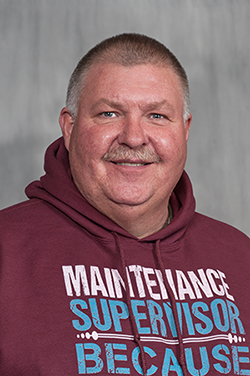By Dana Hernandez

This photo appeared on the front page of Mn/DOT Express, the employee newsletter, in December 1991: Allyson Hartle, policy analyst, Commissioner’s Office, finds a new “mode” to get to work the morning
following the megastorm. She skied the two miles from her home. Photo by J. Oden, St. Paul Pioneer Press
|
Ghosts and ghouls, witches and spells, jack-o’-lanterns and… a mega snowstorm?
That’s correct—it’s the 25th anniversary of the 1991 Halloween Blizzard that surpassed all others in Minnesota. Snow fell from Oct. 31 to Nov. 3, reaching 28.4 inches in the Twin Cities and 36.9 inches in Duluth. The Department of Natural Resources lists it as number one among the “Top Twenty Snowfalls in Twin Cities History” from 1891-2016.
The storm tested the skills and endurance of MnDOT employees who were deployed statewide in efforts to clear roads of snow and ice.
According to the Star Tribune, there were close to 1,000 traffic crashes and many vehicles stranded on roadsides. Buses couldn’t finish their routes and the Minneapolis-St. Paul International Airport was shut down for some time on the night of the storm. Stretches of highway were closed, such as Interstate 90 from Albert Lea to South Dakota. About 900 schools and businesses never opened as the snow kept falling. AAA was able to respond to only about half of the 1,500 emergency calls it received.
MnDOT was prepared for a typical snow and ice season, employees told the Star Tribune in 1991, but the amount of snow was “overwhelming” to keep up with. In the “Mn/DOT Express” newsletter from 1991 a state maintenance engineer said the agency spent $6 million for overtime, sand, salt and rented equipment.
“There was never a snowstorm quite like that one,” said Dean Blomgren, Metro Camden Truck Station snowplow operator. “I hadn’t seen it snow a couple of inches an hour before.”
Blomgren recalls working 42 hours in a 50-hour time frame during the storm. This wasn’t uncommon—he said he knows others who worked long hours, too. At one point during the blizzard, he remembers speaking with a highway patrolman who worked for “18 to 20 hours and didn’t have plans to go home any time soon.” Blomgren called this storm the “total exception to all the rules.”
Despite the ferocity of what was possibly the greatest snow storm in Minnesota history, he still finds snow fun, making his job enjoyable.
“I don’t know what I’ll do when I can’t drive a snowplow anymore,” said Blomgren, after laughing about never wanting to retire. He is celebrating his 47th year as a snowplow operator.

Jerry Eggert, now District 8/Hutchinson region field operations supervisor, was working at the District 8/Glencoe truck station when the Oct. 31-Nov. 3, 1991 blizzard hit. He said crews in his area worked 14- to 16-hour shifts during this time. Photo courtesy of District 8
|
Jerry Eggert, District 8/Hutchinson region field operations supervisor, was working in maintenance at the Glencoe Truck Station in District 8 for about seven years when the Halloween blizzard hit.
“That was probably my first big snow storm. I was working on Hwy 212 and we were somewhat taken by surprise. The snow was heavy and wet—it was tough,” he said.
Eggert said they weren’t expecting as much snow as they received during the blizzard and that “it was a lot to comprehend.” Those working in his area also covered long shifts, lasting from 14 to 16 hours.
Both Blomgren and Eggert agree that there have been advancements in snowplow technology in the past two decades.
Blomgren said plows now have “more wings on them than they did back then,” and he finds that “dual spinners on the plows” used now are helpful.
He also estimated that about “a third of the trucks didn’t have radios” when he started as a snowplow operator in 1969.
Today, communication is much easier.
“Radio systems now have their own channels in each station. Regional channels allow you to connect with your respective stations so you can hear about what’s going on in your area. You don’t talk over everyone else this way. It’s improved leaps and bounds,” he said.
Eggert said that the trucks from 1991 were all levers and knobs on the inside. Today, there are touch screens that make operating a snowplow easier.
If MnDOT had this technology during the 1991 Halloween blizzard, Eggert said, “Things may have been cleared up a little faster. Our engines are bigger and our equipment has definitely improved.”
Jed Falgren, District 7/Mankato area maintenance engineer, was a graduate engineer working in Mankato construction at the time of the Halloween blizzard.
He wasn’t a snowplow operator, but subarea supervisors encouraged him and his coworkers to be aware of snow traps and to think about what could be done to eliminate snow drifts in particular areas. He accepted an invitation for a ride-along that night because no construction would be going on.
“This short ride-along turned into an all-day event,” said Falgren.
He worked on Hwy 14, west of Mankato, and Hwy 169 and Hwy 60, south of Mankato, for half of the day. For the latter part of his ride-along, he worked east of Eagle Lake in an area with low visibility helping to rescue trapped motorists.
“There were dozens of cars, some semis and even two snowplows stuck out there,” said Falgren.
What he remembers most about the 1991 Halloween blizzard is the respect he gained for maintenance workers.
“These people really knew what they were doing. I saw the efforts MnDOT crews go through fighting these storms, facing the unknowns and operating this intimidating and heavy piece of equipment with limited visibility,” said Falgren. “I have supervised maintenance for the last four years and I have respect for the employees I work with.”

Twenty-five years after plowing out southern Minnesota during and after the Halloween blizzard of 1991, these men from District 7 are still keeping a watchful eye on the roads in their part of the state. The group met Oct. 20 in Mankato as part of the district's snow and ice season kickoff. From left are
Fran Bigaouette,
Bruce Buckentin,
Brian Derner,
Steve Hoffman,
Tony Desantiago,
Myron Hentges,
David Weber,
Jack Ziegler, Gary Genelin and
Jed Falgren. Photo courtesy of District 7
|
|



